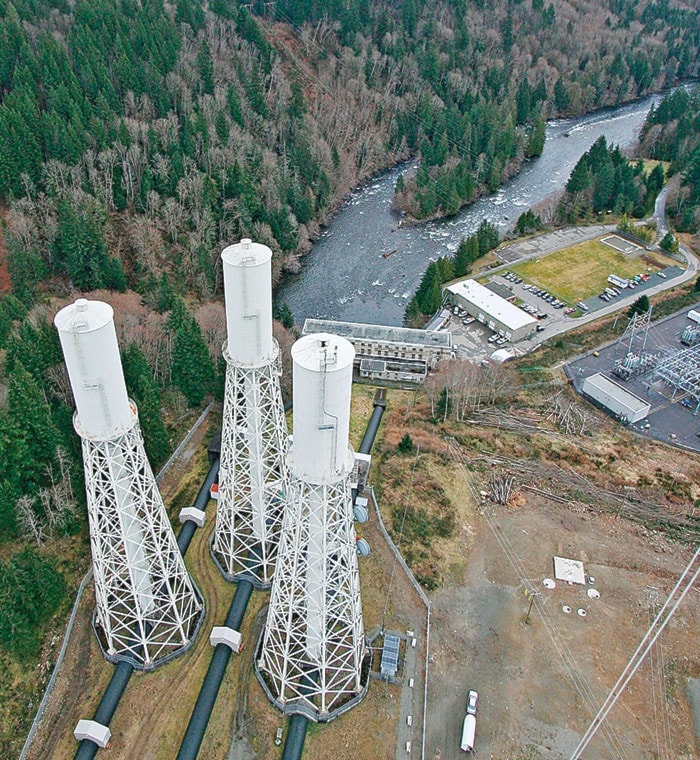A project to rehabilitate a spawning bed on the Campbell River won’t have to wait long for positive results.
“The fish coming in the fall will use this spawning bed right away,” said Martin Buchanan volunteer chairman of the Campbell River Salmon Foundation which is spearheading the First Island Chinook Spawning Gravel Placement Project.
The foundation will lead the placement of spawning gravel on the upper Campbell River near the John Hart Dam Generating Station between Aug. 6-10. A ramp will be built into the river from the helicopter pad on the road into the generating station at the grassy area before the parking lot entrance. Spawning gravel will be placed using an excavator in an area of the river near the upper island across from the public parking lot.
Gravel trucks will deliver loads to be placed by heavy equipment. Due to safety concerns, access to the river upstream of the project will be restricted to swimming, tubing and kayaking. Traffic signage will be in place to ensure the safe and efficient movement of pedestrians, trucks and local traffic.
The Canyon View Trail will remain open, however, users will be re-routed to the John Hart Generating Station road around the worksite.
The project will restore areas historically used by Campbell River chinook providing an additional 2,000 square metres of spawning habitat. It is enough habitat to support 150-200 pairs of returning adults.
Much of the lower Campbell River is lacking the gravel qualities and quantities that chinook prefer. Gravel that existed historically has been washed downstream with the flood flows over the past 60 years.
With no new gravel able to move from the upper watershed naturally due to the placement of three dams and reservoirs, spawning habitat needs to be replenished through periodic additions.
The ultimate goal is to support 4,000 adult chinook, based on historical escapements and habitat capacity of the river and estuary.
“The whole idea is to rebuild the chinook back to historic levels,” Buchanan said.
Gravel replacement is an ongoing necessity on the Campbell River.
Previous projects have been completed on other sites in the river in previous years, including in the Elk Falls canyon.
“It’s an ongoing project,” Buchanan said.
The gravel is screened and washed before being loaded at the gravel pit. This reduces the potential for silt downstream during replacement. Environmental monitors are on site to monitor water quality and operations to ensure minimum impacts.
All equipment will be clean, with only environmentally-friendly lubricants used.
The access site will be deactivated and replanted.
The project is being led by the Campbell River Salmon Foundation partnering with the Fish and Wildlife Restoration Program – a BC Hydro initiative to address issues on watersheds with BC Hydro facilities – BC Parks and Fisheries and Oceans Canada.
